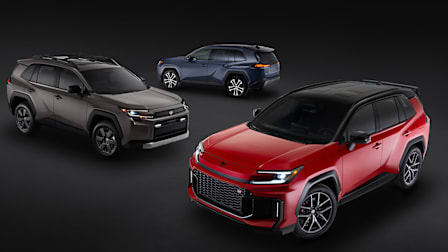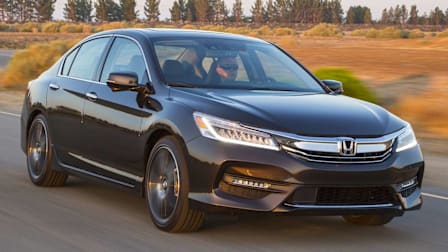Preview: The Chevrolet Bolt EV Returns for 2027, Starting Under $30,000
The new model is an update to the 2023 Bolt EUV, with new battery tech and available Super Cruise
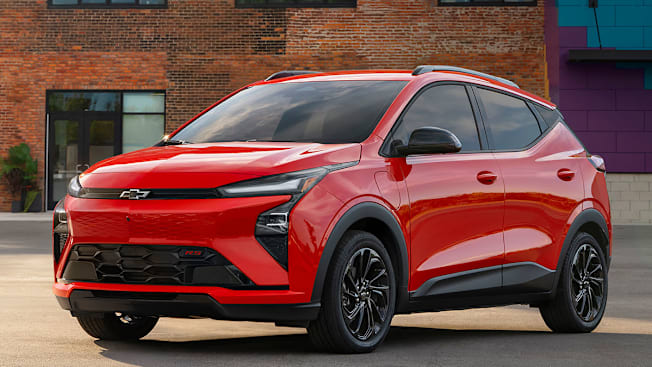
The Bolt is back, at least for now. Chevrolet’s least expensive electric car disappeared after 2023, but an upgraded version is set to return early next year as a 2027 model. If you’re interested in purchasing one, you might not want to wait too long. The automaker says the new Bolt will be a “limited run model,” and didn’t elaborate on how long it will be available.
- Chevrolet Bolt: CR's Take Outside Inside What Drives It Safety and Driver Assistance

Photo: Chevrolet Photo: Chevrolet
CR's Take
After some early growing pains, GM’s current EV lineup is gaining in popularity. The underlying design and battery and motor technology, which GM calls Ultium, underpins the latest models from Chevrolet and Cadillac, as well as the Honda Prologue and the retired Acura ZDX. These have impressed us in road tests, although they still have some room for improvement when it comes to reliability. Given the dearth of lower-cost EVs out there, we suspect that the Bolt’s price will be attractive. But the Equinox EV’s longer driving range, larger interior, and available all-wheel drive make a compelling case for spending a few thousand more (or buying one used).
It’s unfortunate that the Bolt isn’t staying in Chevy’s long-term lineup, though, as there’s a dearth of small, lower-cost new cars on the market. A Chevrolet spokesperson told us that the company expects the Bolt and Equinox EV to account for a majority of its EV sales, and that the automaker will have more details to share later on the specifics of how long the Bolt will be available.
Outside
The new Bolt looks similar to the outgoing Bolt EUV, which was a taller and roomier version of the original Bolt hatchback. It shares the Bolt EUV’s 5.6-inch ground clearance and 105.3-inch wheelbase, and it’s a fraction of an inch taller and longer. It’s about 21 inches shorter than the Equinox EV and about 4 inches shorter than the 2026 Nissan Leaf. Like the new Leaf, the Bolt blurs the line between hatchback and crossover.
Otherwise, the overall design is an evolution of where Chevy left off in 2023. Additional black plastic trim gives the Bolt a more aggressive “face” reminiscent of recent Toyota models, and a range of bright paint colors is still available. The RS trim adds black wheels and roof rails, and opens up a bright yellow exterior paint choice.
The charging port is in front of the driver’s door, which is convenient for pulling into a parking spot to charge.
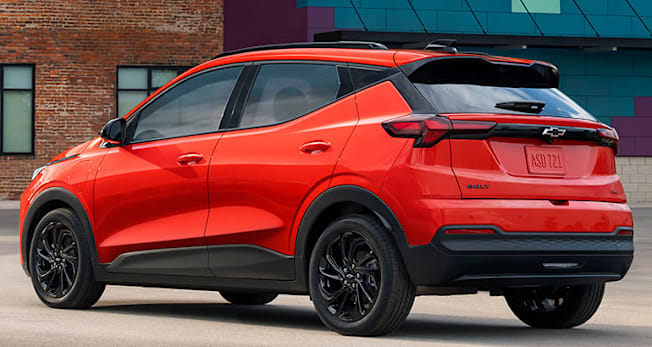
Photo: Chevrolet Photo: Chevrolet
Inside
The driver and front passenger will notice that the new Bolt has a roomier, more open interior than its predecessor. There’s a big space between the front seats for storing a purse or handbag, a shelf for wireless phone charging, a few storage cubbies, and adjustable cup holders.
We haven’t touched the interior yet, but the fit and finish looks more basic than luxurious, which is to be expected on an entry-level car. The Bolt now gets an 11-inch driver’s instrument screen behind the steering wheel, and an 11.3-inch infotainment touchscreen. They appear to run the same operating system as most new GM-made EVs. But that means there’s no Android Auto or Apple CarPlay compatibility. At least the built-in Google-powered software does a good job of planning trips to maximize range and finding charging stations based on available battery life.

Photo: Chevrolet Photo: Chevrolet
Controls appear similar to those in the Equinox EV, including the column-mounted gear selector that’s only confusing the first time you use it. We like that there are physical knobs and buttons for climate and volume.
The new motor and battery design allows for a very efficiently packaged interior, and Chevy says the Bolt has nearly as much cargo space as the Equinox EV with the seats folded down. The Nissan Leaf may fit a bit more, although its sloping rear might make the Bolt a better match for taller items. We’ll be sure to put both new EVs to the test when we do our real-world cargo space evaluations.
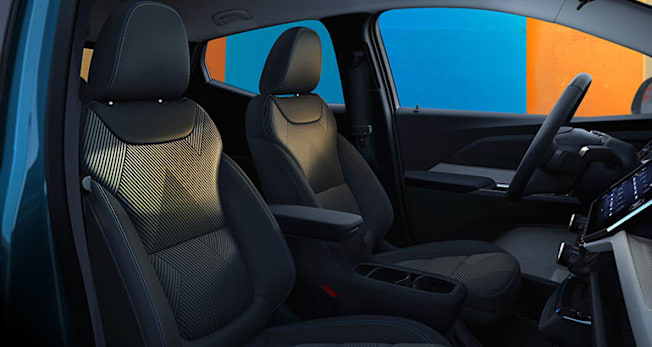
Photo: Chevrolet Photo: Chevrolet
What Drives It
The prior Bolt was a sales success when it was discontinued, but it used an older battery and motor design developed with LG that got left behind when GM switched to its new in-house Ultium platform. The new Bolt uses the Ultium design, which includes a 65-kWh battery and a 210-hp single electric motor.
Range is only slightly improved. GM says it can do 255 miles on a charge, up from the Bolt EUV’s EPA-rated 247 miles. That’s less than the 2026 front-wheel drive Equinox EV’s 319 miles. But the Ultium architecture enables the Bolt to achieve a maximum DC fast charging speed of 150 kW, a significant improvement over the previous Bolt’s 55 kW maximum, and comparable to other EVs in the same price range, including the Leaf. GM says the battery can recharge from 10 percent to 80 percent in 26 minutes. Thanks to a built-in NACS charging port, it can plug in without an adapter at a Tesla Supercharger. The new Bolt also offers vehicle-to-home bidirectional charging, which turns the car’s battery into a temporary emergency power source during an outage.
Chevrolet also says the new Bolt has an improved regenerative braking system, including the ability to use one-pedal driving. We hope it has a better feel than the old Bolt’s squishy brake pedal.

Photo: Chevrolet Photo: Chevrolet
Safety and Driver Assistance
Every Bolt comes standard with a full complement of standard active safety and driver assistance features. These include automatic emergency braking, which can detect pedestrians and mitigate collisions while making a left turn in an intersection; blind spot warning with cyclist detection; rear cross traffic warning; reverse AEB; lane keeping assistance; and a rear occupant alert system. GM’s Super Cruise active driving assistance system is available, as are a surround view camera and traffic sign recognition.



















